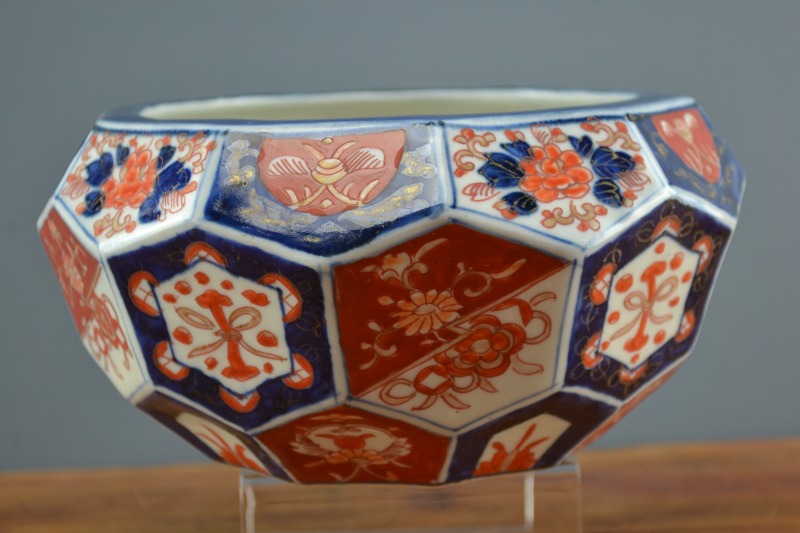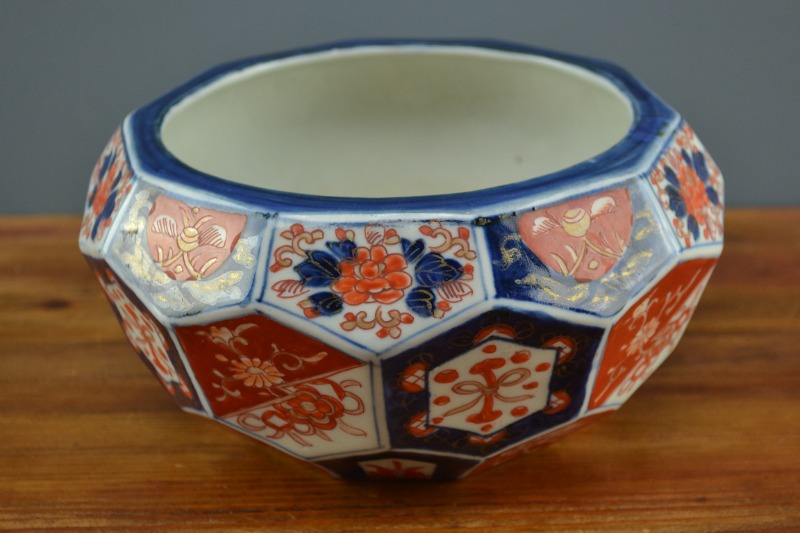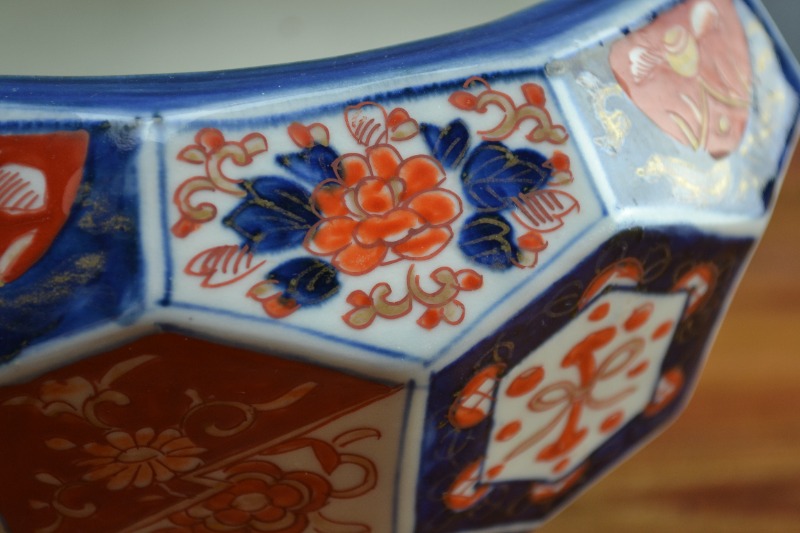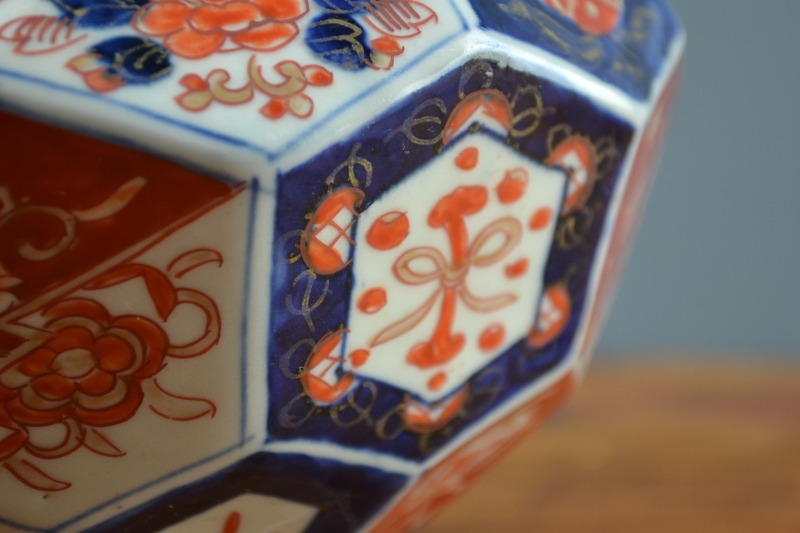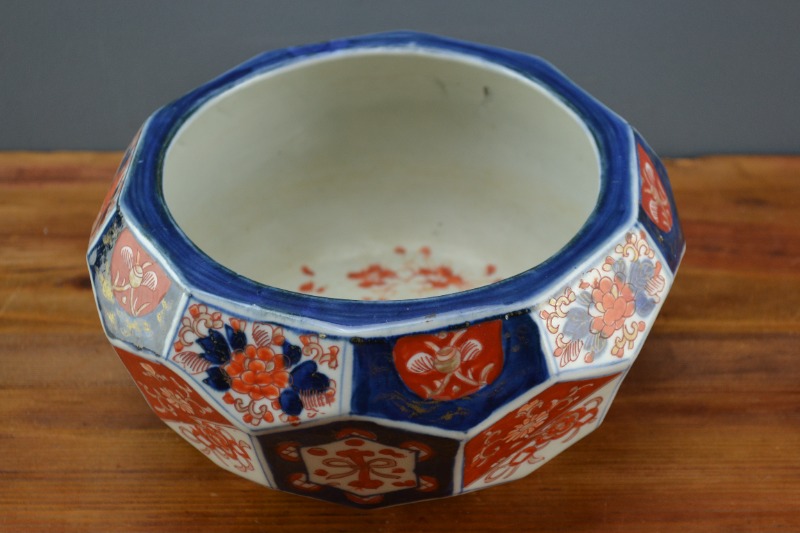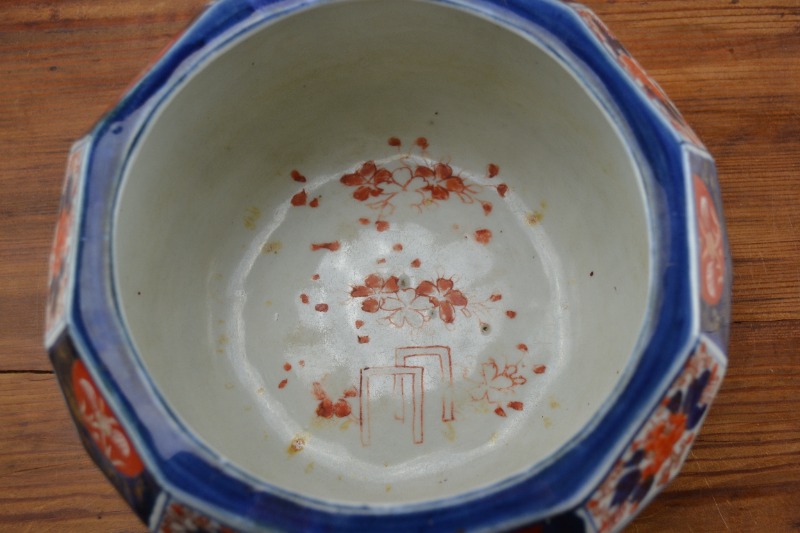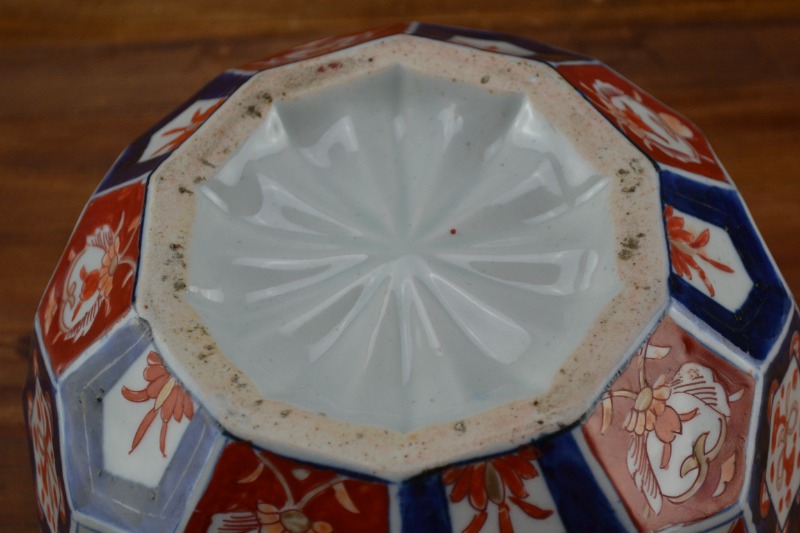Japanese Imari Hexagon-Faceted Bowl, Meiji Period late 19th Century
Age:
Meiji Period late 19th Century
Material:
Porcelain
Dimensions:
22cm x 10cm
Shipping:
Standard Parcel
Price:
SOLD
Unusual multi-faceted Japanese Hizen or Arita ware bowl, dating from the Meiji Period (1868 - 1912). Each hexagon is hand painted in a dark under-glaze cobalt blue and over-glaze gold and iron oxide red with floral motifs. The bowl has an unusual moulded base in a soft celadon glaze.
The bowl is in excellent condition with no cracks or chips. It has a few specks of carbon commensurate with age. The external painting is in good condition. There is some wear to the painting of flowers on the bottom of the inside.
Imari ware is a Western term for a brightly-coloured style of Arita ware Japanese export porcelain made in the area of Arita, in the former Hizen Province. The name derives from the port of Imari, Saga, from which wares were shipped to Nagasaki, where the Dutch East India Company and the Chinese had trading outposts. Arita‘s kilns were set up in the 17th century, after kaolin was discovered in 1616. They became the heart of the Japanese porcelain industry. Imari began to be exported to Europe when the Chinese kilns at Jingdezhen were damaged in the political chaos and the new Qing dynasty government halted trade in 1656–1684. Export of Imari surged again in late 19th century (Meiji era) when Japonism flourished in Europe.

